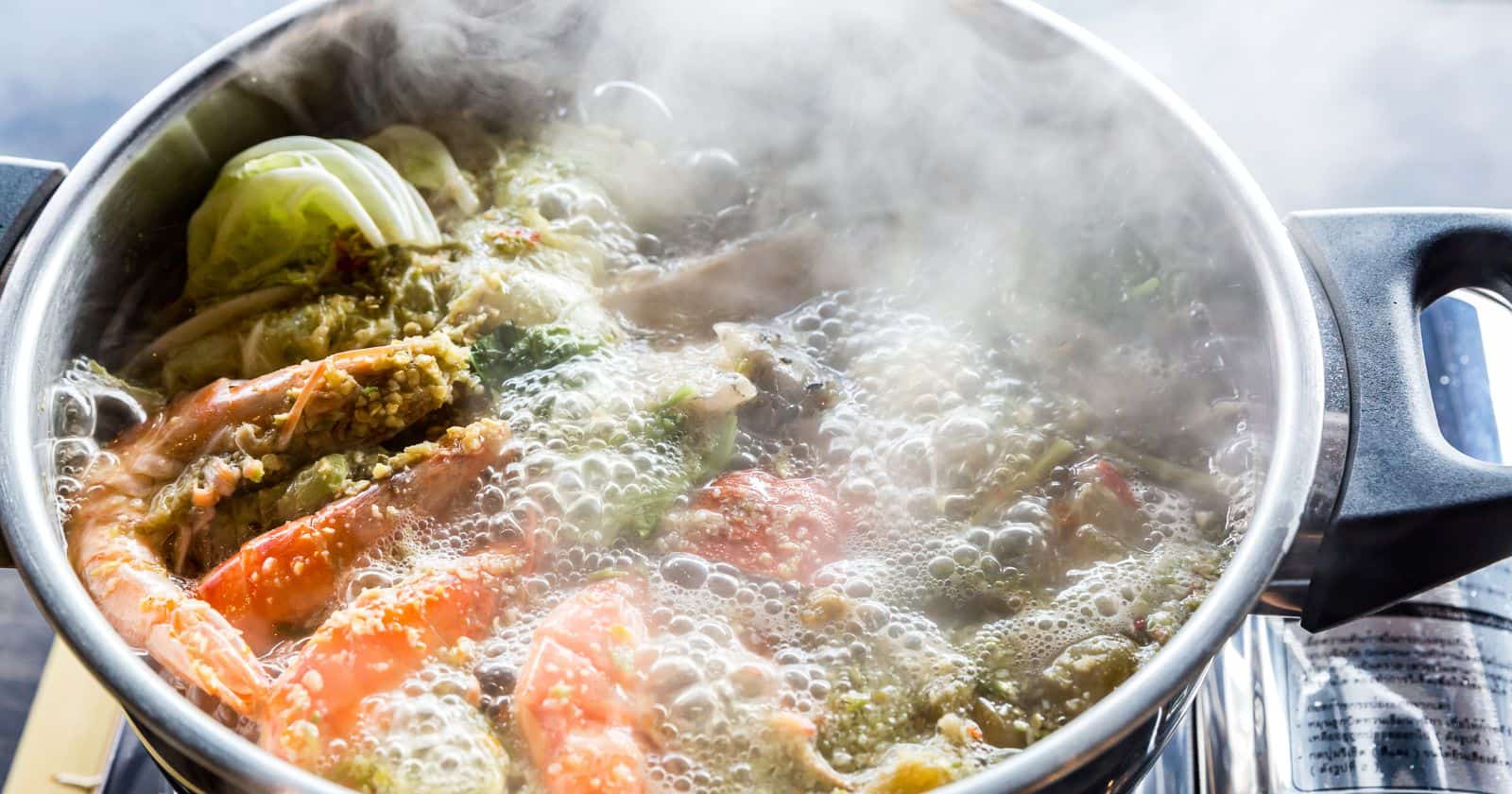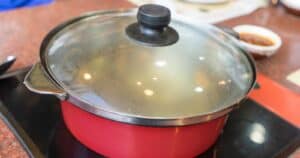Have you ever grabbed a hot pot or pan handle without thinking? That searing, stinging pain is something you won’t soon forget. We all know from experience that touching anything extremely hot can cause serious burns. But what exactly happens to your skin when you make contact with a scalding object?
When your hand touches a hot pot on the stove, the sensitive nerve endings in your skin react immediately. You feel an intense, sharp pain as the heat activates the nociceptors, or pain receptors, in your skin. This pain reflex causes you to quickly withdraw your hand.
At the same time, the outer layers of skin cells are damaged by the high temperature. This destroys proteins in the cells, causing blistering and peeling. If the contact is brief, you may only experience minor redness and irritation. But longer contact can lead to serious, deep-tissue burns requiring medical treatment.
So remember to exercise caution in the kitchen. Always use pot holders, towels or mitts when handling anything hot off the stove or out of the oven. The momentary discomfort of a burn can quickly become extreme pain that takes weeks to heal. Avoiding careless mistakes will spare your hands from injury.
Now let’s discuss some first aid tips and delve further into how heat affects human skin tissue…
The Sensation of Pain Comes On Fast
When your hand touches a scalding pot on the stove, the sensitive nerve endings in your skin react instantly. You feel an intense, sharp pain as the heat activates the special pain receptors in your skin called nociceptors. This causes you to quickly withdraw your hand from the source of heat.
The nociceptors are specially designed to sense extreme temperatures, both hot and cold. But it’s the incredibly high temperatures that trigger the strongest reaction. Anything above 111°F can cause injury and pain. Temperatures above 155°F will cause near instant damage.
What Kind of Damage Does Heat Do?
The outer layers of skin cells are rapidly damaged and destroyed by the extreme heat. The proteins inside the cells break down, causing the familiar redness, blistering, and peeling of a burn injury.
More severe burns may damage deeper skin layers and even reach the nerve fibers, blood vessels, and other tissues below the skin. This causes extreme pain that lasts well beyond the initial contact with the hot object.
The severity of a burn depends on:
- Temperature – Higher temperatures mean faster, more severe damage. Boiling water (212°F) will burn faster than a hot pan (300-500°F).
- Time – The longer the contact with hot surfaces, the worse the resulting burn. A brief touch may only redden skin, while prolonged contact can char or even blacken skin past recovery.
- Location – Thinner skin on the face, hands, and other areas is more easily damaged. Thicker skin can withstand higher temperatures for longer.
First Degree Burns Affect the Outer Skin Layer
The mildest burns only impact the top layer of skin, or epidermis. These are called first degree or superficial burns. Symptoms include:
- Reddened skin
- Pain and itching
- Mild swelling
- Peeling as damaged skin flakes off
First degree burns are painful but usually heal within 5-6 days. Use cool water or a clean, moist cloth to soothe pain and inflammation. Over-the-counter pain medication can also help relieve discomfort. Avoid using ice directly on the skin.
Second Degree Burns Go Deeper
More serious second degree burns involve both the epidermis and the layer underneath called the dermis. Signs include:
- Deep reddening or a mottled appearance as blood vessels under the skin expand from inflammation.
- Blisters filled with fluid form as proteins and fluids leak from damaged cells.
- Moderate to severe pain with possible numbness. The nerves are damaged.
- Swelling as blood vessels leak fluid into tissues.
Second degree burns take 10-21 days to heal with careful wound care to prevent infection. See your doctor for proper treatment. Never pop blisters – this can lead to infection!
Third Degree Burns Destroy All Layers
The most severe third degree or full thickness burns go through every layer of the skin and cause permanent damage. These require emergency medical care and surgery. Third degree burns involve:
- Blackened, charred skin with a leathery or waxy appearance. The full thickness of skin is damaged, leaving no cells to heal properly.
- Severe pain or complete numbness as nerve endings are destroyed.
- No blisters are present because the top skin layers are entirely burned away.
- Skin may feel hard and stiff as collagen proteins congeal.
- The burned area does not blanch or turn white when pressed due to extensive vascular damage.
Third degree burns must be treated in a hospital burn unit. Debridement of dead tissue, excision of the burn, and skin grafts are typically required.
How Burns Progress Through Skin Layers
Burns are dynamic injuries. The damage often deepens over hours after the initial contact with heat. This “burn progression” happens because the destructive chemical reactions triggered inside skin cells continue even after the heat source is removed.
For example, a spill of boiling water may initially cause superficial redness and pain. But over the next several hours, fluids leaking from damaged cells can cause more tissues to die. A first degree burn can convert to a much deeper second or third degree burn if not properly treated.
Beware of Hot Pans, Steam, Fire, and Liquids
Burns frequently happen in the kitchen when people grab hot pots and pans or accidentally splash scalding liquids. Other common causes include:
- Reaching over an open stovetop flame
- Getting too close to bonfires or campfires
- Touching hot dishes and plates straight from the oven or microwave
- Spilling freshly brewed coffee or tea
- Turning on very hot tap water in the sink, shower, or bath
Steam rising from pots or kettles can also cause rapid, severe burns. Moist heat conducts faster and penetrates deeper into skin tissues. Steam at 212°F will burn 20 times faster than dry heat at the same temperature!
How to Estimate Water Temperature When Boiling Food
Use these estimates to gauge how hot your cooking water is:
- 160°F – Water just starts bubbling lightly.
- 180°F – Small bubbles begin rising steadily from the bottom.
- 212°F – Many larger bubbles breaking the surface. The water is at a full rolling boil.
Remember that even at 160°F, spilled or splashed water can quickly cause painful redness and blistering if it contacts your skin. Always handle pots and cooking utensils with care. Consider wearing long sleeves or an apron to shield your arms when cooking.
Treat Minor Burns Right Away
Follow these tips if you experience a minor red, painful burn on your hands or arms from a hot pot or pan:
Cool the Burn
- Hold the burned area under cool (not cold) running water for 10-15 minutes. This stops the burning process by lowering skin temperature.
- Soak the area in cool water if running water isn’t available.
- Never use ice or very cold water – this can damage skin tissues further.
Remove Rings, Watches, Bracelets
- Remove anything touching or constricting the burned area before swelling begins.
Cover with a Sterile Dressing
- Once cooling is complete, pat dry gently and cover with a sterile non-stick bandage or clean cloth.
Take OTC Pain Relievers
- Over-the-counter medications like acetaminophen or ibuprofen can help ease pain as the burn heals. Avoid aspirin, which may increase bleeding.
See a Doctor for Severe Pain, Blisters, or Large Areas
- For anything beyond a minor burn, seek professional medical treatment promptly.
How to Prevent Serious Burns in the Kitchen
These simple habits will help keep you safe while cooking and avoid painful contact burns:
- Use rear burners first whenever possible and turn handles inward on the stove.
- Keep young children away from the stove area or teach older kids fire safety.
- Always use potholders to grasp hot pots, pans, dishes, and utensils.
- Open lids, oven doors, and remove food containers slowly to prevent scalding steam burns.
- Set your water heater temperature to no higher than 120°F to avoid tap water scalds.
- Install anti-scald tempering valves in tub and shower if caring for children or elderly.
- Check food temperature carefully especially when microwaving liquids like soup or beverages which can erupt.
- Never leave cooking food unattended – boil overs can cause splatter burns.
- Keep flammable materials like towels and curtains away from stove burners.
Stay Alert to Stay Safe From Burns
A brief moment of inattention in the kitchen can lead to injurious and extremely painful burns if you accidentally touch anything extremely hot. Always be cautious when cooking, use pot holders, treat minor burns promptly, and see a doctor for anything more severe. Understanding what happens when skin meets high heat can help prevent further damage and allow proper healing.





